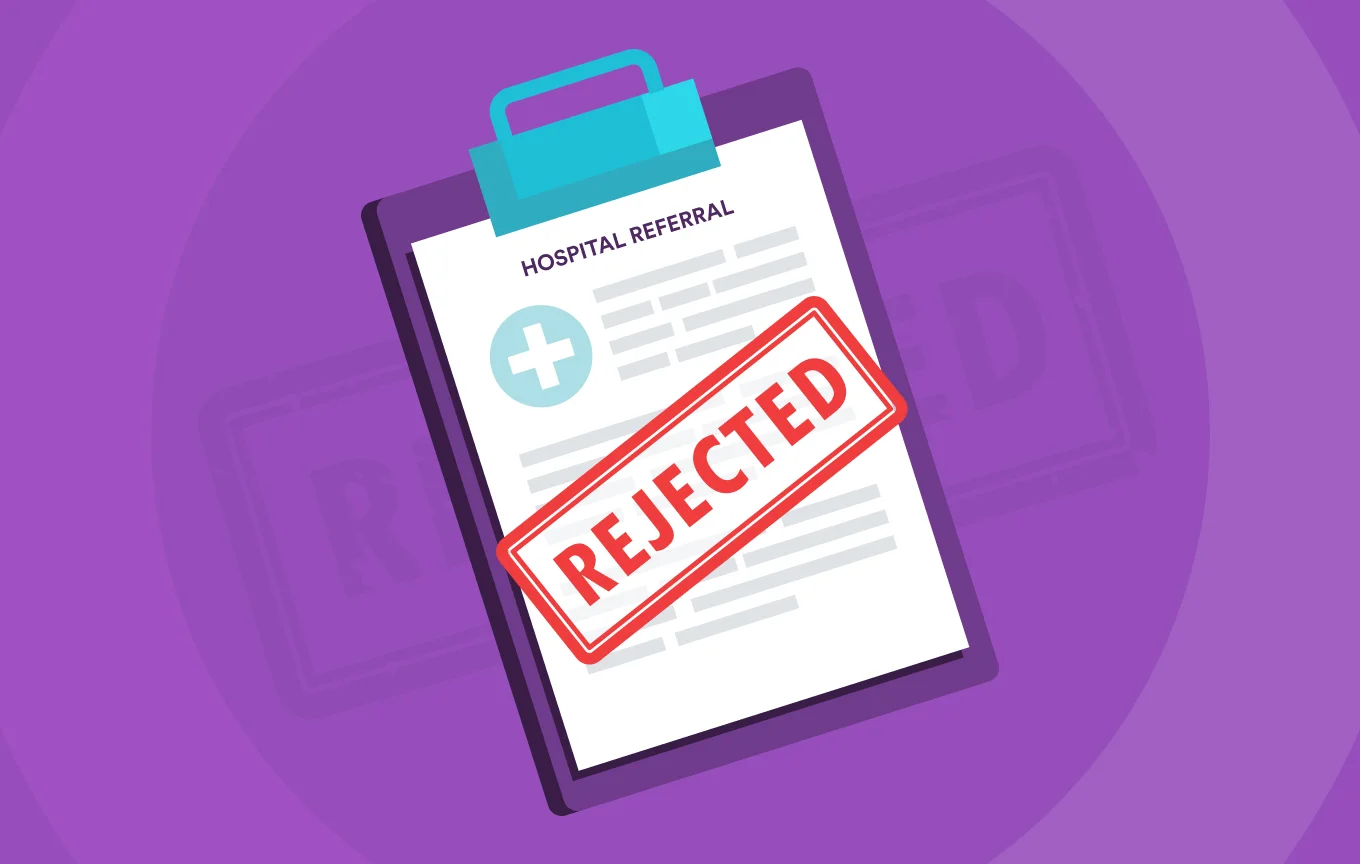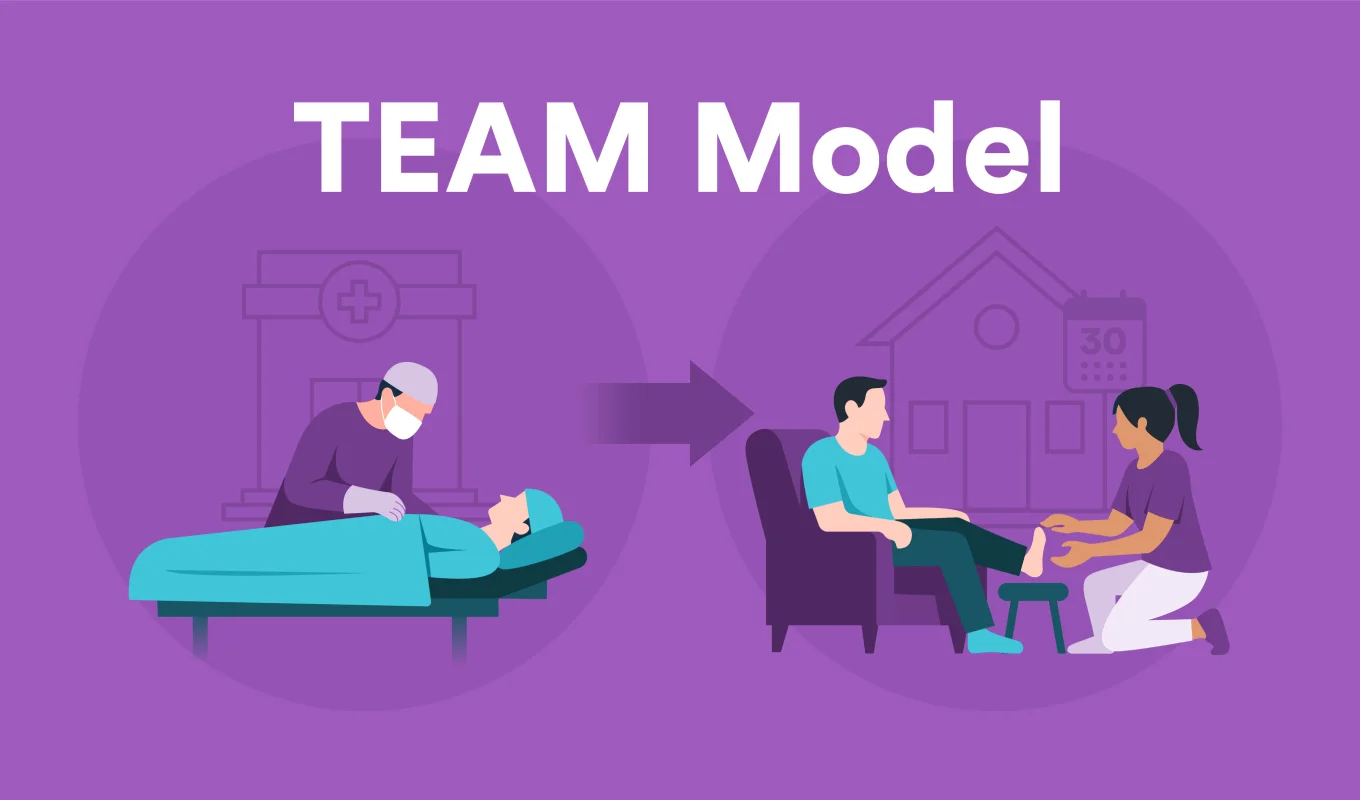Hospitals lose up to an estimated $39.6 billion in orthopedic surgery revenue over 3 years as patients leak to community physical therapy providers.
Introduction
Patient referral leakage occurs when patients leave a health system’s care pathway and obtain services elsewhere. In orthopedic care, a critical leakage point is physical therapy (PT): patients often choose community clinics or independent PT providers
over hospital-affiliated facilities.
This seemingly small decision has large downstream consequences. Hospitals not only lose therapy revenue, but also risk losing high-value services - notably surgeries like joint replacements, ACL repairs, and spine procedures. The financial impact is
significant, affecting surgical case volumes and overall hospital revenue.
Protecting therapy access is now a critical priority for orthopedic service line sustainability. As margins tighten and orthopedic care shifts rapidly into outpatient settings, the battle for patient loyalty increasingly starts with physical therapy.
Health systems that fail to capture and coordinate therapy access not only lose downstream surgical revenue - they lose the ability to successfully compete in the growing outpatient musculoskeletal (MSK) market.
Managing therapy access successfully is now the necessary step to protecting future surgical volumes and dominating the full MSK care continuum.
To address this risk, hospitals are turning to standardized, in-home outpatient PT models to keep therapy in-system and protect surgical pipelines.
Scope of Orthopedic Referral Leakage
Studies indicate that a majority of orthopedic patients referred to PT do not stay within the hospital system. A 2022 Luna national analysis of 3.9 million commercially insured patients found that 60% of patients referred to physical therapy by their health system went to out-of-network PT providers. In fact, even
health systems with the best retention still see leakage rates well above 50%, and some organizations experience PT referral leakage exceeding 80%.
This means most hospitals - academic medical centers and community hospitals alike - are losing well over half of their referred PT patients to outside providers. The primary reasons are convenience and access: patients tend to choose PT locations close
to home or work, and with over 38,000 PT clinics nationwide to choose from, convenient options abound. Patients are often unwilling to drive more than a few miles for therapy, so if the health system’s rehab facilities are too distant or booking is difficult,
patients seek care elsewhere. In short, roughly 1 in 2 (or more) orthopedic patients “leak” out to community PT, creating a major patient retention challenge.
Downstream Loss of Orthopedic Surgeries and Revenue
While losing physical therapy visits is problematic, the real financial consequence is the loss of downstream orthopedic procedures and ancillary services that those patients might have generated had they stayed in-network with the hospital. Orthopedic
service lines are among the most lucrative for hospitals - for context, a single orthopedic surgeon brings in $3.3 million in hospital revenue per year on average, reflecting the high value of surgeries like joint replacements and spine operations.
One healthcare survey found that executives attributed up to 17% of
overall revenue reduction directly to patient leakage, underscoring that the downstream loss - largely from expensive procedures not captured - far eclipses the initial lost therapy charges. When a referred patient leaves the system for PT, the hospital
not only loses the therapy revenue but also loses the opportunity to provide imaging, follow-up visits, and, critically, the orthopedic surgery itself.

Industry data confirms that no hospital is immune from this problem. As one industry report noted, "even those health systems most successful at patient retention are losing substantial amounts of patients and revenue to rehab
leakage." Whether it is a large academic medical center with world-class orthopedic surgeons or a smaller community hospital, both are vulnerable to losing downstream surgical cases if patients seek therapy outside the system after consultation.
One comprehensive health system improved patient keepage by just 2.4% and saw an annualized $33 million increase in revenue. Another system projected that reducing PT leakage by 25% - for example, by keeping an additional 2,500 of 10,000 referred patients in-network - would recapture approximately $41 million in downstream revenue
over three years. Even small improvements in patient retention translate into tens of millions of dollars recovered per hospital.
The clinical impact is just as serious. Many orthopedic conditions for which PT is prescribed - such as degenerative joint disease, ACL tears, and chronic back pain - have a significant likelihood of eventually requiring surgical intervention. If those
interventions occur, they often happen outside the original hospital’s system once the patient has leaked. Even patients who forgo surgery entirely still represent lost opportunities for imaging, injections, or pain management services that would
have been otherwise captured.
Although an exact count of lost surgeries is difficult to pin down, if even 10% of the 2.4 million leaked PT patients in 2022 would have been surgical candidates, it equates to 120,000-240,000 orthopedic surgeries not performed by the referring hospitals
- corresponding to approximately $18 billion in lost orthopedic surgical revenue over just three years.

In short, without intervention, every leaked patient represents a missed surgical opportunity, costing individual hospitals millions and the healthcare industry billions.
The remainder of this blog post is available for download as a complete whitepaper. It includes expanded insights, real-world examples, and actionable tips that build on the topics introduced here, including:
- Where Do Leaked Patients End Up for Surgery?
- Comparison of Typical vs. High-Retention Orthopedic Programs
- What Hospitals Can Do About Orthopedic Surgery Leakage Due to PT Pressures









